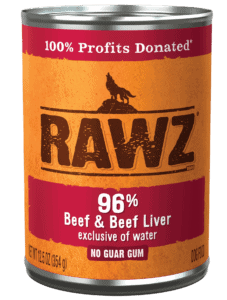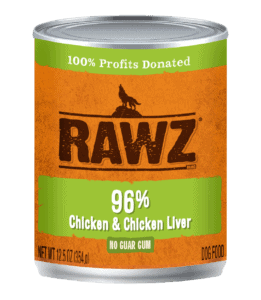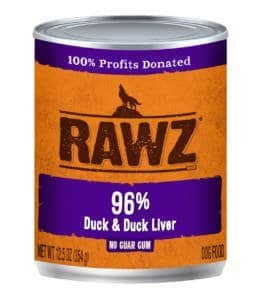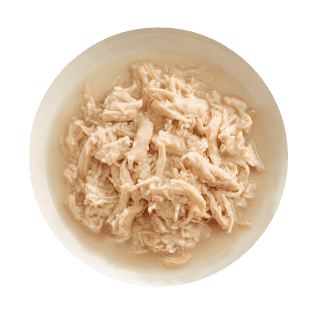What to Feed a Diabetic Dog, According to Pet Nutrition Experts

Diabetes in dogs has become increasingly common. Recognizing early signs, such as weight loss, excessive thirst and digestive trouble, can significantly improve your canine's quality of life. Whether you've recently discovered your dog has diabetes or you've been managing it for some time, the diagnosis can be challenging and overwhelming. But try not to worry. Although diabetes isn’t curable, you can effectively manage it through proper diet, exercise and care.
To help you support and improve your dog's health, we created an in-depth look at diabetes in dogs. From the best foods to tips for managing their diet, learn everything you need to know about helping your diabetic dog live a long and satisfying life.
Overview of Diabetes in Dogs
Diabetes is just as common in dogs as it is in humans. Similar to humans, there are two main types of canine diabetes — dogs can be insulin resistant or insulin deficient. Insulin, a hormone produced by the pancreas, is essential to regulate glucose levels in the bloodstream. When a dog is insulin-resistant, they are less responsive to insulin’s effects, which hinders their glucose uptake. On the other hand, insulin-deficient dogs don’t produce enough insulin, which leads to excess glucose in the blood. This second condition is known as diabetes mellitus or Type 1 diabetes.
Diabetes mellitus is the most common form of diabetes in dogs, impacting their ability to transport glucose throughout the body. Glucose is a vital energy source that fuels many bodily functions. So, when this process falters, glucose accumulates in the blood instead of providing cells the energy dogs need to function.
If not managed correctly, diabetes mellitus can cause severe health issues, such as organ damage or vision problems. However, owners can effectively prevent the progression of diabetes mellitus by monitoring their dog’s diet, administering insulin if necessary and encouraging an active lifestyle.
The Best Diet for Diabetic Dogs
Diet is crucial in helping manage diabetes in dogs. Ensuring your dog’s blood sugar levels remain as close to normal as possible will keep your dog feeling good and reduce the possibility of diabetes-related complications such as urinary tract infections or cataracts.
We’ve outlined general guidelines on constructing a healthy dog diabetes diet. But it’s always a good idea to consult your dog’s veterinarian about their individual health history before making significant dietary changes.
High Protein
High-protein diets can help dogs regulate their blood sugar levels. Unlike carbohydrates, protein has minimal impact on blood sugar. Protein causes slower and steadier glucose fluctuations after meals, which helps prevent rapid spikes and crashes in blood sugar levels. It also helps dogs feel fuller and balance their metabolism, making it a good source of energy for the body.
Not all protein sources are equal. The best protein sources for dogs typically include meats like chicken, turkey, pork, beef, fish, muscle and organ meat. Avoid processed meats and those that are high in fat or sodium.
High Fiber
Fiber slows down the absorption of glucose, which helps regulate a dog’s blood sugar level. It also reduces sudden blood sugar spikes after eating and helps dogs feel fuller faster, which can lead to weight loss. When formulating a high-fiber diet for dogs with diabetes, it’s important to know that different types of fiber contain distinct nutrients and offer varying benefits.
Insoluble fibers, known as bulking fibers, are found in whole grains and vegetables. They promote healthy digestion and slow the absorption of carbohydrates. Soluble fibers, such as fruit and beans, can be absorbed by water and slow the intake of sugars.
A balance of insoluble and soluble fiber, such as canned pumpkin, apples, carrots or brown rice, can help stabilize blood sugar levels and contribute to better gastrointestinal health in diabetic dogs.
Low Carb
When absorbed in the body, carbohydrates can cause blood sugar spikes that can be problematic for diabetic dogs. Therefore, high-carb diets can lead to hyperglycemia or glucose toxicity and should be avoided. Low-carb diets will reduce the amount of glucose in the bloodstream and help prevent excessive fluctuations in blood sugar levels. When considering which carbs are acceptable to include in a healthy diabetic diet for dogs, options like sweet potatoes, broccoli and peas are okay in moderation.
Low Fat
High-fat diets can lead to obesity and complications that worsen diabetes systems. Therefore, it’s best to stick to low-fat diets with fewer calories that help promote weight loss.
Proper Hydration
It’s essential to ensure all dogs are well-hydrated, but especially when it comes to dogs with diabetes. Proper hydration helps dogs maintain stable blood sugar levels and manage excessive thirst, known as polydipsia. Help your dog stay hydrated by making sure they have access to clean water at all times. And, if you notice your dog isn’t drinking enough, try encouraging them by following these steps.
Foods to Avoid for Diabetic Dogs
Specific foods can spike dogs' blood sugar levels, cause weight gain and make diabetes more difficult to manage. Check your dog’s food labels and avoid the following foods when possible.
- Semi-moist dog foods: These products generally have fructose, sucrose or simple carbohydrates that can elevate blood sugar levels. Look out for sugar, corn syrup or honey on your dog’s food label to make sure you aren’t feeding these ingredients.
- Foods high in fat: Peanut butter and milk bones are rich in fat and carbs, which are especially important to avoid if your dog is dealing with weight concerns.
- Refined Sugar: This is a definite no for dogs with diabetes diets. This may mean your dog can’t indulge in its favorite treats, but sugary dog snacks can trigger glucose spikes and cause their blood sugar to drop.
- Homemade food: While homemade food can be beneficial in some instances, different batches of food can vary in consistency and it lacks rigorous testing on nutrient interaction and absorption for dogs. It’s best to stick to products made by companies with nutritional expertise.
- Added sweeteners: Some fiber supplements include added sweeteners like xylitol, which can cause hypoglycemia and be incredibly dangerous for canines.
6 Tips for Managing Your Dog’s Diet
Navigate your dog’s diet and journey toward improved well-being with these six essential tips.
1. Provide the Right Nutrients
Diabetic dog diets should be high protein, high fiber, low carb and void of sugar. From food to treats, chews, table scraps and medication, it’s crucial to be mindful of everything your dog consumes. If your dog isn’t eating, try mixing canned food or low-sodium chicken broth into their regular meal. This can help entice them and make sure they receive the proper nutrition.
2. Feed Consistently
In addition to providing dogs with the right nutrients, according to board-certified veterinary nutritionist Dr. Deborah Linder, it’s also vital to “ensure consistency to improve diabetic control.”
Help regulate your dog’s blood sugar by feeding them the same food at the same time every day. From meals to treats, consistency goes a long way in supporting insulin management and overall health.
3. Ensure Regular Exercise
Regular exercise can help dogs lose weight and lower their blood sugar levels. As with your dog’s feeding schedule, consistency is a key component of a healthy exercise regimen. Encourage moderate activity and try to maintain the same length and level of intensity from week to week.
4. Monitor Their Weight
According to Dr. Linder, ideal caloric intake “depends on body condition and whether the pet needs to gain or lose weight to obtain ideal body condition.”
In addition to helping you satisfy your dog’s caloric intake, consistently monitoring your dog's weight will help you properly adjust their insulin needs and nutritional requirements.
5. Keep Track of Glucose Levels
Regular testing will allow you to see how insulin is affecting your dog. This information will help you manage fluctuations in blood sugar levels, alter their treatment plan and determine which foods are best suited to your dog. Consult your dog's vet to establish an effective testing regimen and ensure that you make the proper adjustments.
6. Understand Your Dog’s Needs
Every dog is different, so it’s not necessary to make changes if things are working. Pay attention to how your dog is feeling and reacting to their food, monitor their exercise regimen and keep an eye on their blood sugar levels.
Dr. Linder recommends, “Keep a diet journal and tell your vet everything,” from your dog’s eating habits to activity level. This will enable you to make timely adjustments or have confidence knowing your dog is stable and okay.
Support Your Dog's Health with RAWZ
When it comes to effectively managing your diabetic dog’s health, patience is paramount. Regulating your dog’s blood sugar levels can take time, so stay persistent as you incorporate new habits and remember the right diabetes diet for dogs is crucial.
RAWZ high-protein, low-carb foods offer distinct advantages for dogs with diabetes. With a focus on natural, minimally-processed ingredients, RAWZ ensures your dog receives essential nutrients without unnecessary additives that can cause diabetes-related complications.
To help maintain stable blood sugar levels and promote your dog’s health for a satisfying life ahead, find RAWZ in an independent pet store near you.










